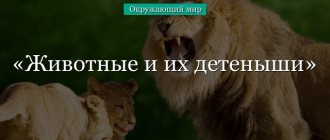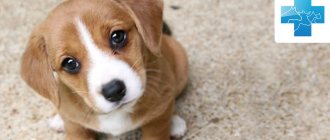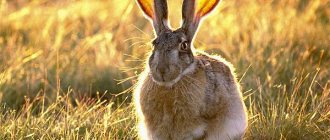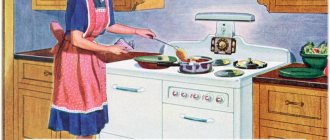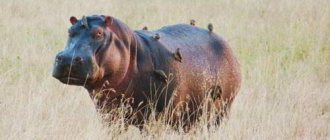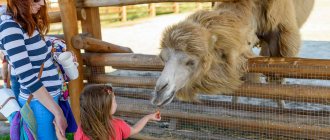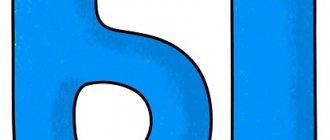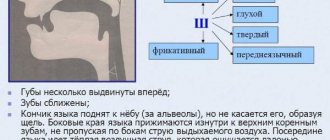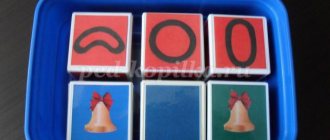LiveInternetLiveInternet
Homemade [/td]
GALINA SHALAEVA
The fauna of the globe is large and diverse.
Animals inhabit all the nature around us. Animals are living beings. The word “creature” comes from the word “exists,” that is, lives. So it turns out that any animal lives and, just like a person, breathes, moves, eats, takes care of its offspring and builds a dwelling for itself - a “house”. |
| Animals are wild and domestic. How are they different from each other? |
| Wild animals |
| live in freedom and can get by without human help. They get their own food and build their own housing. These are squirrels, wolves, hares, elephants, lions, tigers, bears, zebras, kangaroos, rhinoceroses, giraffes, monkeys, foxes, camels, etc. |
| You can see many wild animals in the zoo. |
| Pets |
| They have been living next to a person for a long time, so they cannot do without his help. They forgot how to get their own food, build a home and defend themselves from enemies. |
| A person takes care of domestic animals, builds them comfortable and warm housing, feeds them, and they give him many useful things: milk, meat, wool, etc. |
| Domestic animals include cows, horses, pigs, goats, cats, dogs, donkeys, sheep, chickens, ducks, etc. |
| Pets live in city apartments and on farms. |
| Cow |
| A cow is a very useful animal for humans. Meat, milk, sour cream, cottage cheese, butter - the cow gives us all this. A cow has horns, with which it defends itself when it senses danger. The cow also has an udder from which milk is expressed. A cow gives us 25 liters of milk per day, that’s almost three large buckets! Milk is very good for health: it contains a lot of vitamins. Cows communicate with each other by mooing, and they unmistakably find their way home. In summer, cows eat lush grass, and in winter, hay. |
| A cow lives 15–18 years. Its age can be determined by its horns. With each birth of a calf, the cow gets a new ring on her horns. |
| If there are a lot of cows on a farm, then they all live in a barn. Cows sleep in it, and in winter they escape from frost and blizzards. Cowsheds are large, warm barns with thick walls, floors and ceilings. The light is always on in them. In the barn, each cow has its own separate “room”. There is a drinking bowl for water and a feeder for food. In summer, cows are taken to meadows (pastures), where they eat fresh grass |
| Horse |
| The horse is a very hardy animal. In ancient times, the horse was used in war: it was harnessed to war chariots. The horse has strong legs with strong hooves. Strong iron horseshoes are put on the hooves. This is necessary to prevent the horse from rubbing its legs. Horses carry various weights, they help a person move, especially in muddy times, where a car or bus cannot pass. |
| Horses give us meat and milk, from which we make a tasty and healing drink, kumiss - it is called the drink of heroes. |
| Horses live in special premises - stables. This is a long wooden barn, divided on both sides into small rooms - pens in which horses live with their children - foals. In the stables they are warm, light and safe. |
| But the horse is valued not only for the great benefits it brings to humans. It is also a beautiful, graceful animal with a very kind character. No wonder many poems and songs have been written about horses. |
| Donkey |
| Donkeys are the closest relatives of horses, only smaller in stature. Just like horses, donkeys can carry heavy loads. The donkey is one of the first domesticated animals. The Egyptians domesticated donkeys more than five thousand years ago. Due to their exceptional usefulness, these animals are bred all over the world. In Africa, for example, there are wild donkeys, which, like camels, are able to feed on dry grass and shrubs in the desert and can go without water for some time. In many African countries, the donkey is still a common means of transport, replacing the horse or car. |
| The donkey, which is usually gray in color, is easily recognized by its long ears and the tuft at the end of its tail. Donkeys are very stubborn. If a donkey does not want to move, it cannot be forced to do so even through punishment. That is why they say about stubborn people: “Stubborn as a donkey.” |
| Goat |
| A goat is a very useful animal for humans. Goats give us healing milk, which cures many diseases, meat, wool and fluff. Goats eat almost everything. |
| A goat has small horns and tiny neat hooves. Goats live in small pens with their children - kids. |
| Goats love to eat tree bark and young leaves, so when they are released to graze, they are tied to a peg with a long rope so that they do not damage the fruit trees. |
| Pig |
| The pig gives us meat, lard, leather, which is used to make shoes, gloves and bags. This is a very useful animal, and many fairy tales, stories and proverbs are dedicated to it. Pigs eat almost everything: fruits, berries, acorns, leftover food. The pig has a thick body and short legs. Just like horses, they have hooves, only they are small. The pig has tusks that protrude outward. The body of pigs is covered with small prickly bristles. |
| Pigs live in small pens called barns or large buildings called pig pens. There the pigs live with their children - piglets. |
| Near the pigsties, special fenced walking areas are usually set up, where pigs are allowed to walk even in winter. In summer, pigs graze in the pasture, and in the heat they rest under canopies in the shade. In winter, pigs are fed carrots, potatoes, and beets. |
| Sheep |
| Sheep give us meat, milk, wool and sheepskin. A delicious salty cheese called feta cheese is made from sheep's milk. Beautiful fabrics are made from wool, sheepskin coats, hats, and mittens are made from skins. Sheep eat grass, hay, straw. |
| Wool grows on a sheep just like hair grows on your head. In the same way, it protects the sheep from the cold. Once a year, usually in the spring, when it gets warm and the sheep no longer needs such a “fur coat,” all the wool is cut from the sheep and made into yarn. |
| The sheep also live on the farm in special pens. |
| Dog |
| For many centuries, the dog has been man's friend, longer than any other pet. Hundreds of thousands of years ago, when huge woolly mammoths still roamed the earth and people lived in caves, dogs first made friends with humans. And to this day the dog is our most faithful friend. Dogs protect their owners from enemies, serve on the border, and work as rescuers. There are even guide dogs that help blind people move. |
| There are a lot of dog breeds. All breeds are capable of performing various types of activities. Currently, there are several thousand breeds. Some of them guard livestock (herding dogs), others help in hunting (hunting dogs), others, together with police officers, catch criminals and look for dangerous substances and objects (service dogs), and there are dogs that remain purely domestic animals. Such dogs are called decorative. |
| A dog can live in a person’s house with its children - puppies. Or in a house specially built for her - a kennel. |
| Cat |
| When most people say “cat,” they think of a small domestic animal. However, lions, tigers and panthers also belong to the cat family. |
| You've probably noticed more than once that when the lights are off, the cat is perfectly oriented in space. A cat's pupil can change its size greatly: the stronger the lighting, the narrower it is, while in the dark it is wide and round. A cat's vision is six times sharper than its owner's. |
| The cat moves and sneaks up absolutely silently thanks to the soft pads on its paws. These pads hide sharp claws, which the cat can release and scratch with if she is angry or her young kittens are offended. |
| The whiskers, located on both sides of the cat's nose and above the eyebrows, are extremely important for the sense of the surrounding space. With the help of its whiskers, a cat in some incomprehensible way learns about an object what its eyes, ears and nose cannot tell it. |
| The cat makes a variety of sounds: meows, purrs, squeals and howls. She lives in a man's house, and everyone loves her very much. |
| Rabbit |
| Rabbits give us fur and meat. They live in special small houses that people build for them. In the summer, rabbits, together with their children - rabbits - live in summer hutches with mesh floors. |
| Rabbits eat grass, tops, stalks, and in the summer - hay, branches, carrots, and beets. These funny animals are constantly chewing something, and their teeth grow throughout their lives. Therefore, in order to grind them down, they gnaw on everything. |
| The baby rabbits are born naked and blind, and a caring mother rabbit arranges for them a warm nest of bedding and fluff. On the tenth day, the rabbits begin to see clearly and are covered with down. |
| Goose |
| Geese are either wild or domestic. Wild geese fly away to warm countries in winter, while domestic geese remain in a person’s house. The goose has two red webbed feet and a large beak, with which it plucks its favorite young grass. |
CONTINUED HERE: https://royallib.com/read/shalaeva_galina/domashnie_givotnie.html#0
( 2 ratings, average 4 out of 5 )
Did you like the article? Share with friends:
